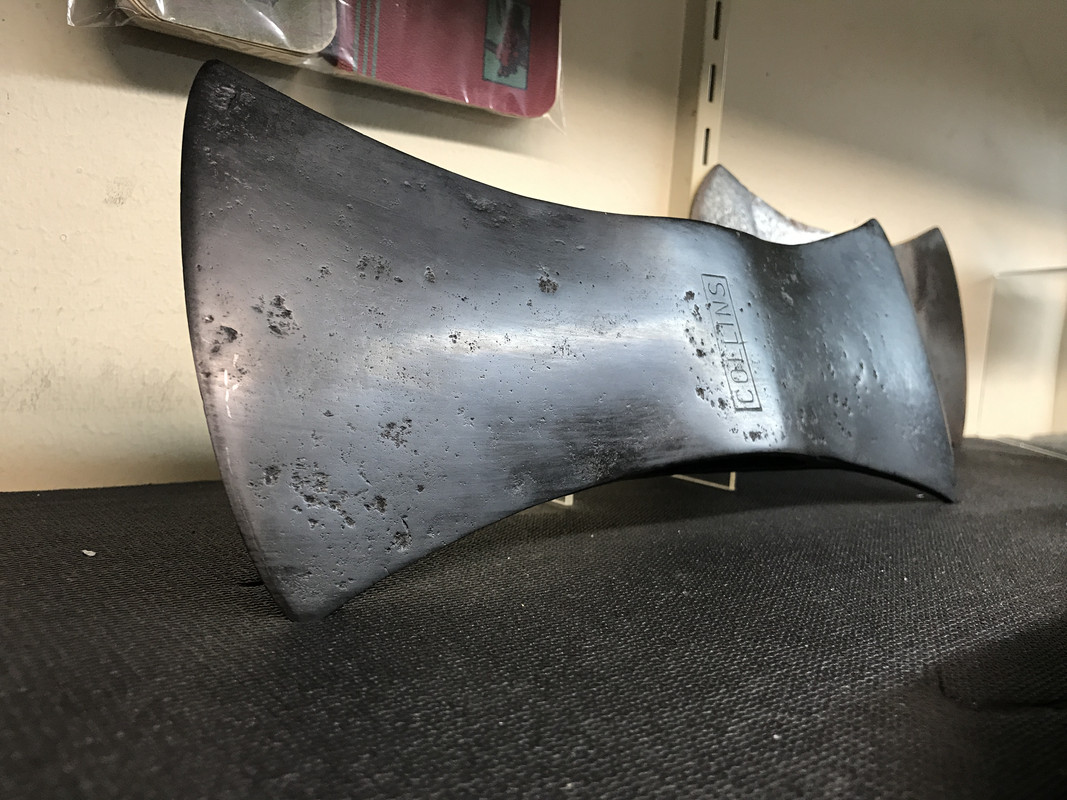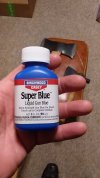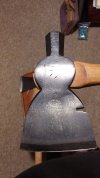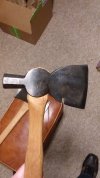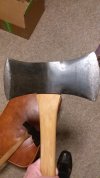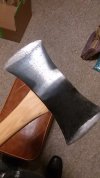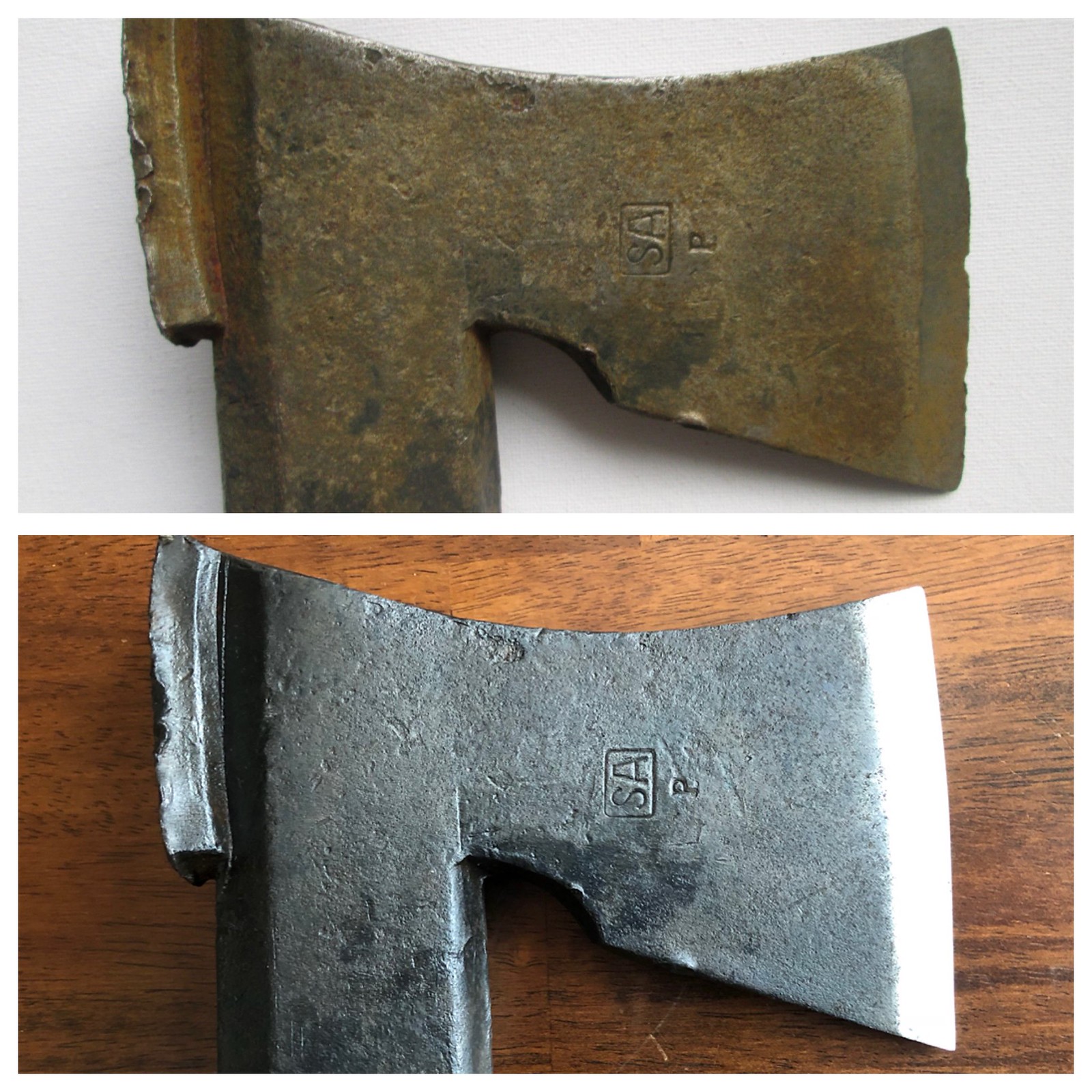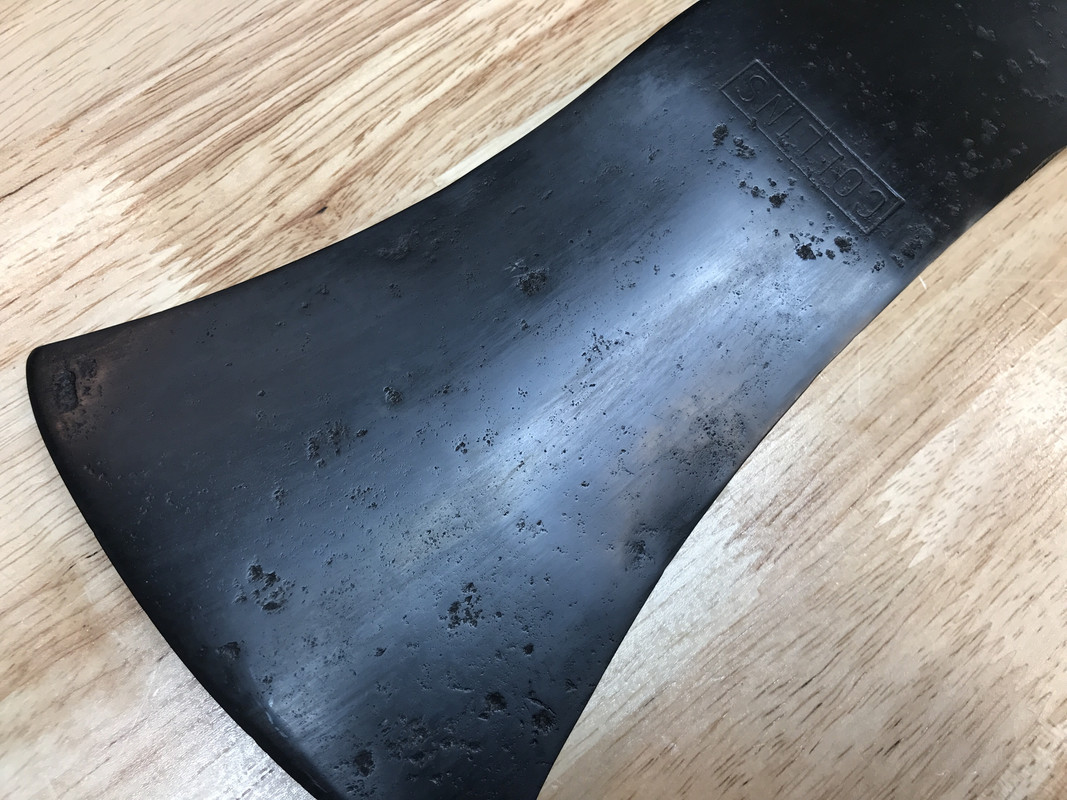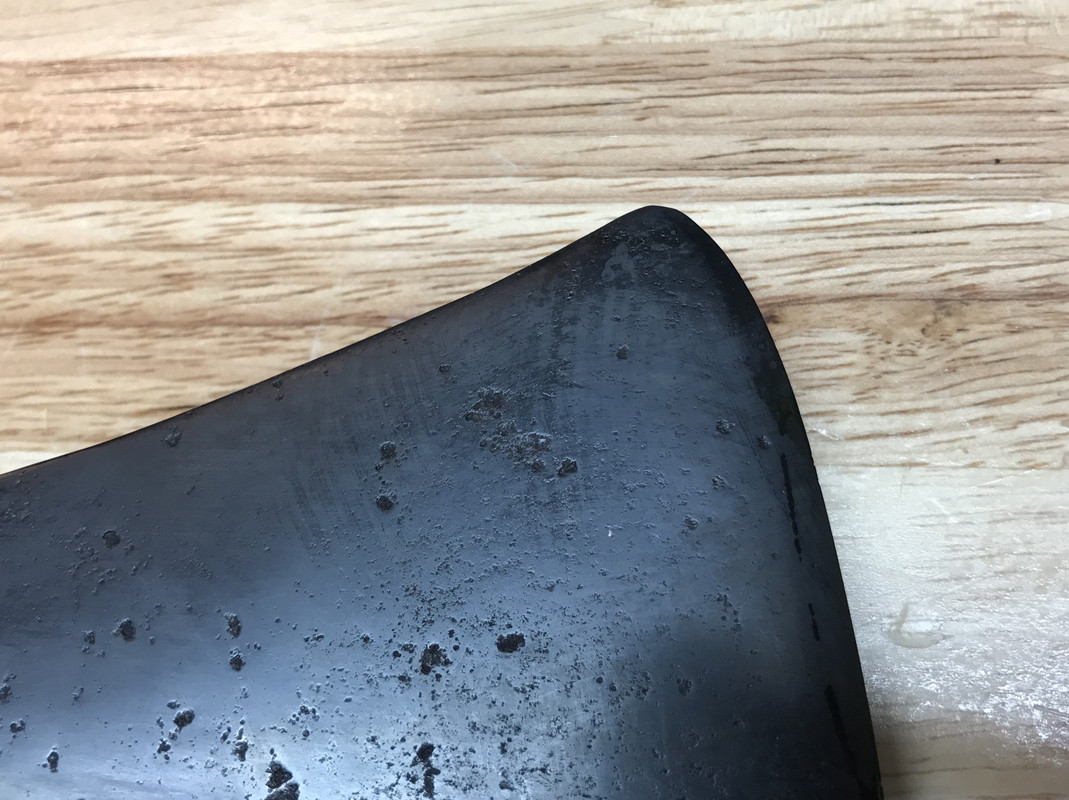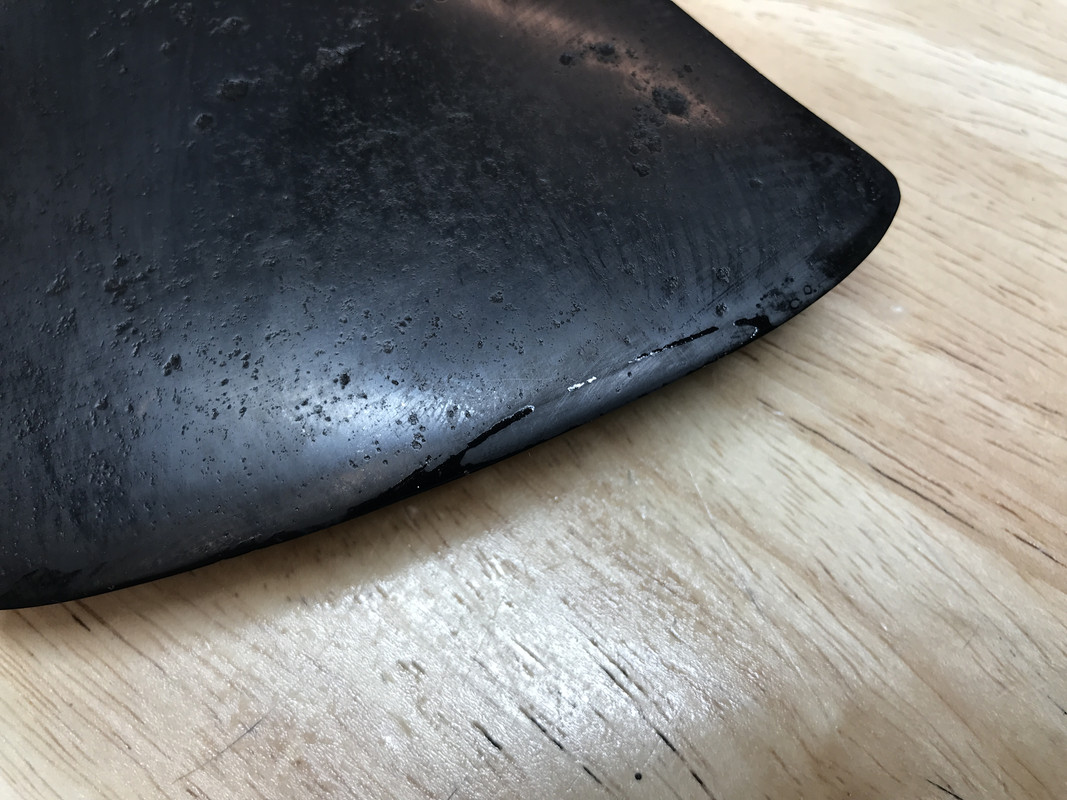What was the process you performed on that Collins double bit in the last picture?
It turned out good. It is smooth but not too shiny.
Ah! You noticed the difference. It is less oily looking because it was done with the “Caswell’s Sealer” for the dry look, not the “Penetrating Sealer” which leaves it oily looking.
I prefer the Penetrating Sealer because it is more forgiving and the “oily” look subsides over time and can be wiped off.
When dipping into the Dry Sealer and hanging it, they would look streaky with drips running off it.
That Collins was one of my first with Caswell’s and I was still getting my technique. Not liking the runs I tried wiping off the excess sealer with a rag and it was difficult to prevent it from looking streaky. (I’ll try to capture some of these flaws in photos.)
Admittedly these are minor imperfections. Sharpening the bit and sending it through wood a couple times would end all such concerns about cosmetic flaws.
I was able to achieve good results with the dry sealer using an air brush but ultimately I just found the Penetrating Sealer was much easier to work with. You can dip, spray or brush it without issue.
The Blackener is super easy, it happens in 30-90 seconds and you can very much control how black you want it.
You can use the same bath over and over.
(I do a 15/20% muriatic acid dip first, for good measure, but I have done it both way with no decernable difference.)
Edit: I should add that you are right though. The Dry Sealer has a “look” that the Penetrating Sealer does not. It’s a thickness or luster because it has more of a surface film.



